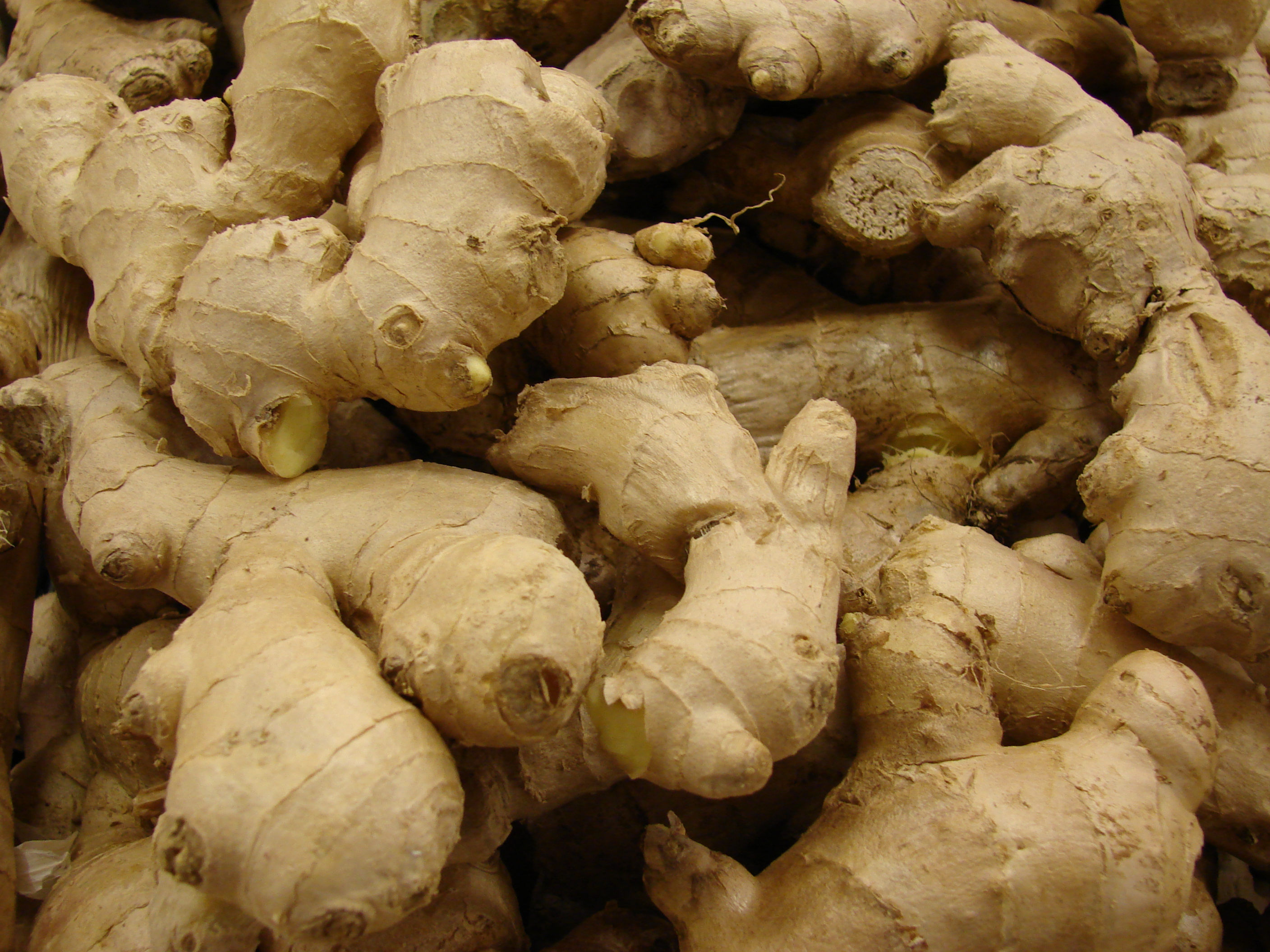Description
Ginger is a perennial herb that is generally grown for its swollen underground stems, or rhizomes, which have a thickness of between 1.5 and 2.5cm. The plant grows to around 30-100cm in height, and in optimal conditions can grow to form clumps of around 1.5m x 1.5m. Ginger belongs to the same plant family as turmeric, cardamom, and galangal.
Planting requirements
Planting season: October to January
Planting conditions:
| Propagation | Rhizome (the part of the ginger we commonly call the root) |
|---|---|
| Planting method | Each section (cut ginger pieces) should be planted around 6 inches apart |
| Soil | Requires a humus-rich nutrient soil. Before planting, mulch with a layer of compost or any other organic material will retain moisture and slowly break down into the soil, increasing nutrient levels. |
| Water | Requires a moist soil but not waterlogged |
| Light | Requires partial sunlight. 3 - 5 hours of sunlight would be ideal |
Growing conditions:
| Temperatures | Thrives in temperatures between 19°C and 29°C |
|---|---|
| Soil | Prefers well-draining soil with plenty of organic matter. Hence, better to prepare the soil with compost as it provides the necessary nutrients while supporting moisture retention |
| Water | Provide light watering to encourage root development. Watering is required simply to moisten the soil. Once roots begin to develop and the leaves sprout, you can increase the watering. |
| Weeding | First weeding has to be done after one month of planting. Second weeding is done after three months of planting |
Harvesting
The best time to harvest ginger depends on the desired maturity of the rhizomes:
- Mature Ginger: Typically, ginger is ready for harvesting 8 to 10 months after planting. Signs of readiness include yellowing leaves and stems that start to fall over. At this stage, the rhizomes will have a firmer skin, making them less prone to bruising during handling.
- Baby Ginger: If you prefer to harvest baby ginger, which is younger and has a milder flavor, you can begin harvesting about 4 to 6 months after planting. Baby ginger will have a cream color with soft pink scales and does not require peeling.
In general, for optimal flavor and storage, it's advisable to wait until the leaves have dried and yellowed before harvesting mature ginger.
Curing
After harvesting, ginger rhizomes should be washed well and cured by spreading them out in a well-ventilated area for about one day.
Storage
Fresh, unpeeled ginger can be kept for 1-2 weeks under room temperature. Keep in an air-tight container or bag in the refrigerator crisper drawer where freshness can be retained for 4-6 weeks.
Protecting your plants
Pest control
Pest type:
- Stem Borer (Dichocrocis puncitiferalis)
- Scale insect (Aspidiella bartil)
Symptoms:
Stem Borer: Shoot borer larvae feed on the inner tissues of ginger's pseudo stems, disrupting water and nutrient flow. This causes yellowing and drying of leaves. Frass (insect waste) around bore-holes on the stem indicates larval presence. The central shoot wilting and yellowing is a key sign of infestation.
Scale insect: Scale insect colonies feed on the surface of ginger rhizomes, causing them to shrivel and dry out, with poor germination rates. Early infestation leads to reduced tillering, stunted growth, yellowing, and eventually the death of ginger plants. Excessive nitrogen fertilizer and high soil moisture promote the spread of the infestation.
Control method:
Stem Borer: Regularly inspect the crop and maintain good field sanitation. Avoid overusing nitrogen fertilizer. Remove and burn rotting shrubs (infected with "Mala goba"). This method helps control damage without the need for chemical sprays.
Scale insect: Use healthy seed rhizomes and apply recommended insecticides during seed treatment to help prevent infestations.
Disease Control
Disease type:
- Soft rot (Pythium Spp)
- Bacterial Wilt (Ralstonia solanecearum)
- Leaf spot (Phylosticata zingiberi)
Symptoms:
Soft rot:
- Water-soaked lesions appear on the collar region of the pseudostem during the initial stage of infection.
- Soft rot symptoms initially develop on the rhizome and gradually spread to the roots.
- The tips of the leaves turn light yellow, spreading to the entire leaf, while the middle portion remains green and the margins turn yellow in the early stages of the disease.
- In severe cases, yellowing symptoms are found on all leaves.
Bacterial Wilt:
- In the initial stage, water-soaked lesions appear at the collar region of the pseudostem, progressing both upwards through the pseudostem and downwards to the rhizomes.
- Mild drooping and curling of the lower leaf margins are the first prominent symptoms, gradually spreading from the lower leaves to the upper leaves.
- As the disease worsens, yellowing and wilting become more evident.
- When gently pressed, the affected pseudostem and rhizome secrete a milky ooze, and a foul odor is emitted from the infected plant parts.
Leaf spot:
- The disease symptoms begin as water-soaked spots, which later develop into white spots surrounded by dark brown margins and a yellow halo.
- The lesions enlarge, and adjacent lesions merge to form necrotic areas.
Management:
Soft rot:
- Use healthy rhizomes for new planting.
- Solarize the beds before planting.
- Maintain proper drainage.
- Remove infected plants and ensure proper sanitation.
Bacterial Wilt:
- Use healthy rhizomes for planting.
- Solarize the soil beds before planting.
- Avoid cultivating ginger in the same field for more than two consecutive seasons; implement crop rotation instead.
Leaf spot: Cut and remove infected leaves at initial stages.
Sources
In addition to our General List of Sources (link), we used these specific references:
